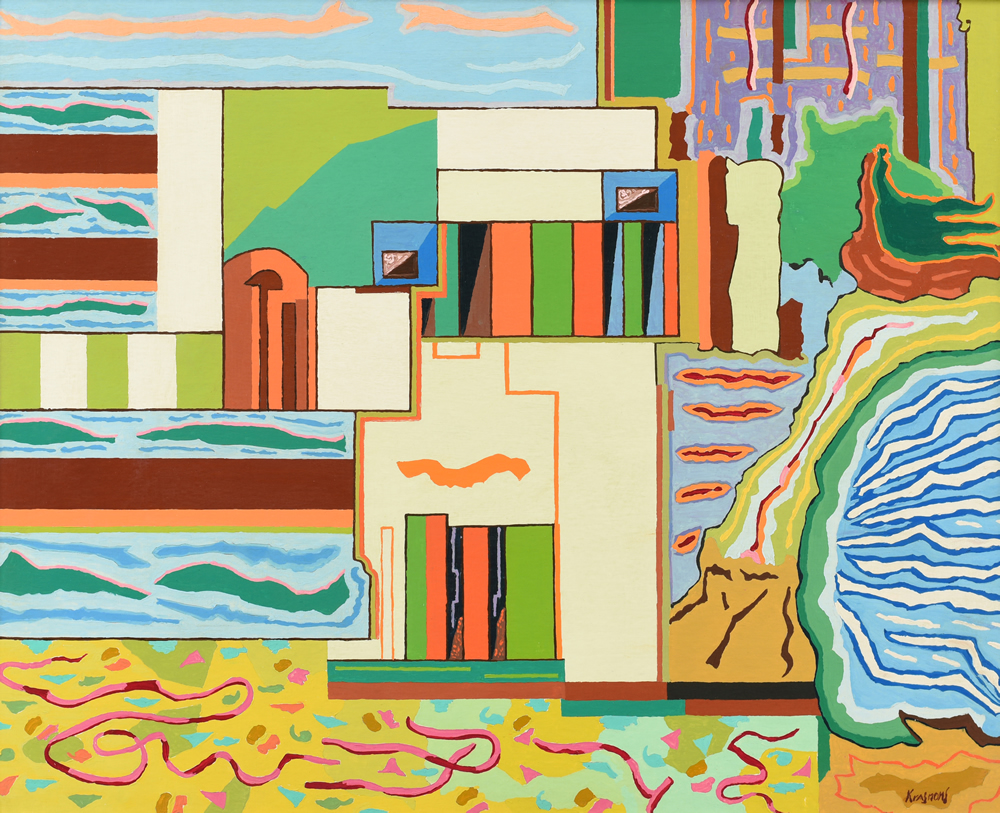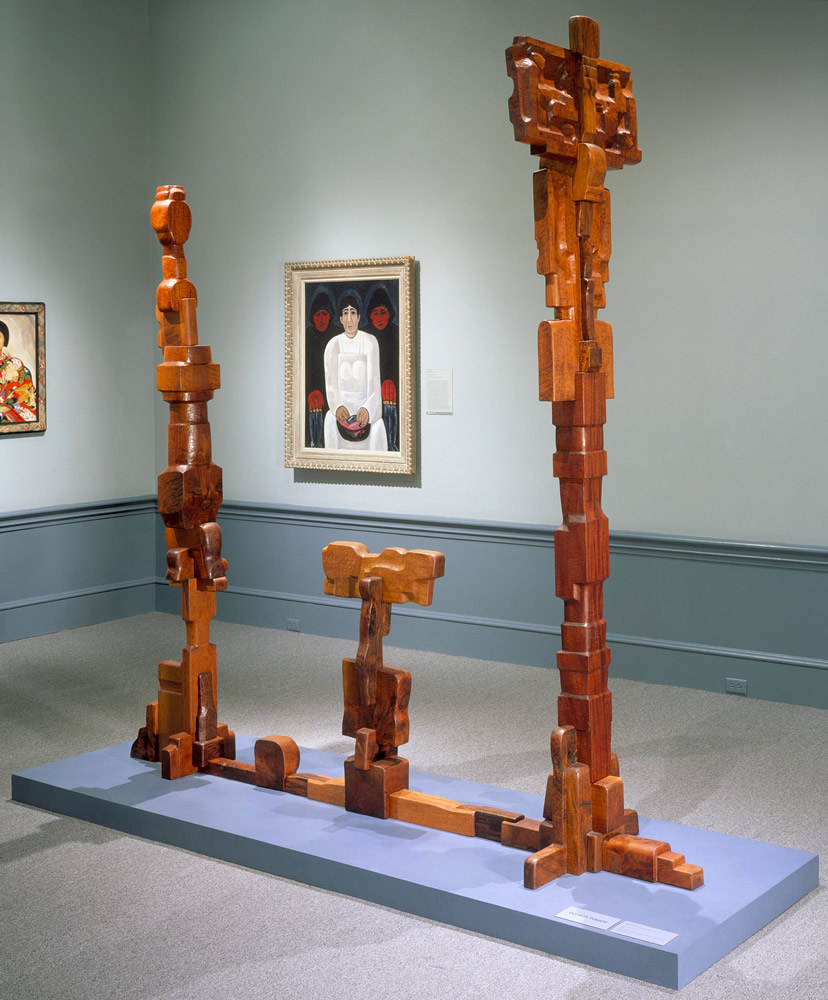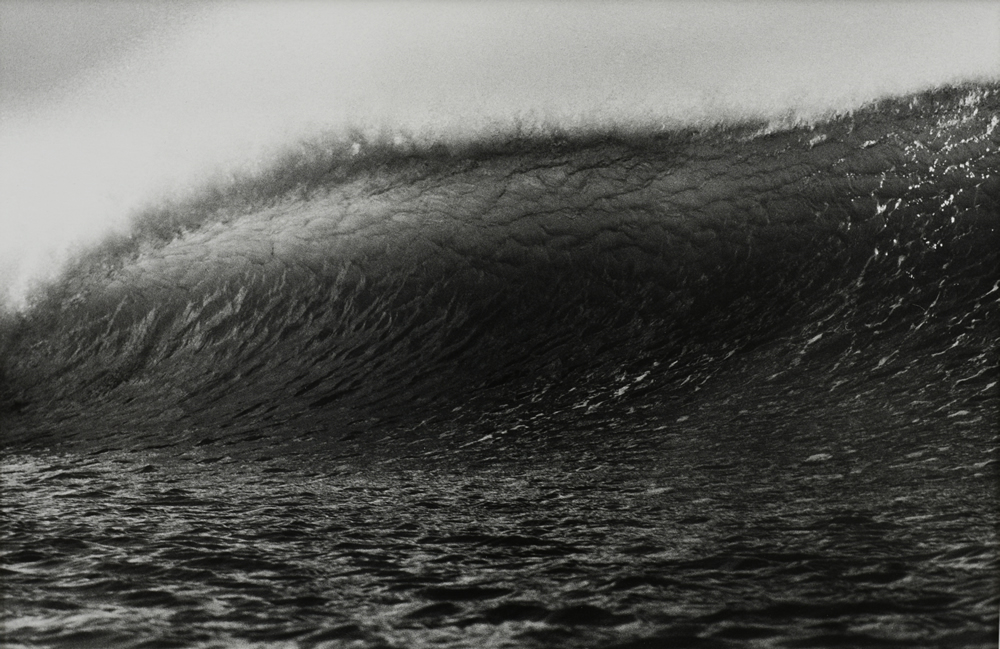
The “Peter Krasnow: Maverick Modernist” retrospective exhibition for the most part exhumes works from the Laguna Art Museum’s permanent collection. Looking at its variety, intriguing content and consistent quality, one must wonder why it took so long for Krasnow’s paintings and spectacular carvings to come to light again.
Curated by Michael Duncan, it strongly suggests that extensive schooling does not necessarily make an artist. Instead, it reveals that a willingness to experiment and grow, with all the tribulations that may entail, may conquer uncharted creative frontiers.
The show opened at the museum on June 26 and runs through Sept. 25.
Krasnow emigrated to the United States from the Ukraine in 1907 and studied art at the School of the Art Institute of Chicago. He also lived in New York where he took inspiration from the hardscrabble life in immigrant ghettos, traversed the United States in a rickety Ford and finally settled in the diverse cultural atmosphere of Los Angeles, which he called a melting-pot conducive to making “living art.”
The show begins with a 1928 Gauguinesque self-portrait showing a man with intense eyes and handsome semitic features. Looking straight at viewers, he appears to demand close attention and yet proper distance. Equally impressive is his mastery of color that, regardless of painting style, pervades his entire body of work.
Krasnow’s stylistic diversity attests that, innately talented to begin with and having studied enough art to learn his craft, he learned most by looking at the art and culture of others, be it old masters, contemporary modernists and surrealists, ancient mythological illustrations or folk art practiced by people he encountered during his travels. To his credit, he also eschewed painting in what he called the “eucalyptus school” even when times were tough, insisting that it was “presumptuous for any man to paint an imitation of nature and call it art.”
As paintings like the 1916 “Market Place,” the 1920 “St. Andrews One Cent Coffee” and “Under the Brooklyn Bridge” attest, Krasnow lived in the moment before the phrase was coined, letting his subjects and perceived atmosphere determine his choices of color and style. The same holds true for his portraits which vary from the masterly formal, as in “Edward Henry Weston” in 1925, to those bearing the imprint of Expressionism as in “Portrait of Olaf Olesen,” circa 1921, and “The Dreamer (Portrait of Dr. Wissotsky),” from 1924.
Given Krasnow’s Jewish heritage, he was not oblivious to the murderous events taking shape in Europe. But, as he explained, he contradicted the darkness of the times with use of color. By 1941, his work had morphed into brightly hued geometric forms as attested by “”Untitled,” 1941, “K-1 1943” and “K-4 1944” (Architectural Landscape) 1944-1978.

As time progressed, his canvasses remained highly colorful and filled with Native American symbols and the terrain of Arizona and New Mexico, such as in “K-12 1975.” In light of his colorful, symbol-laden ‘60s and ’70s paintings, some wondered whether his cultural openness might have led to forays into some form of psychedelia.
We learn that in spite of Krasnow’s acclaim among his Los Angeles peers, commercial success flagged. He took a break from painting. On a whim, he began to carve wood. His majestic carvings reminiscent of (“Totemic Figure,” 1938) tribal totems and sometimes just simple natural forms that carry the show. Note “Praise” 1935 and “Untitled,” 1936.
As Duncan, a corresponding editor at Art in America, explains in his cogent catalog essay, those somewhat mysterious carvings brought the public, otherwise prejudiced against modern art, to his door. (The catalog has been designed by Wendy Peng and produced in partnership with Cal State Fullerton’s department of exhibition design/museum studies directed by Mike McGee.)
The museum’s executive director, Malcolm Warner, praised the Skirball Cultural Center in Los Angeles and the Magnes Collection in Berkeley along with Krasnow collectors Fred Fox and Greta Dockum for loaning works as well.
Also noteworthy are detailed pencil studies for a stained glass window and temple doors alluding to Old Testament themes and another drawing of a not realized bas relief mural for a Bullock’s department store. Contrary to common practice, Krasnow made detailed sketches of his sculptures after he had already carved them.
Given Krasnow’s artistic adventurism, it’s no wonder that American artist Lorser Feitelson (1898-1978), recognized as a creator of post-Surrealism among other directions in modern art, called Krasnow (1886-1979) the youngest old artist in Los Angeles and the oldest young artist because his art does not date but is ever present.

Waves with Distinct Personalities
Also not to be missed are 29 photographs from Anthony Friedkin’s “Wave Portfolio,” made between 1977 and 2006 at beaches between La Jolla and Carmel. A Santa Monica resident, Friedkin, 67, describes himself as a “disciple of the sea,” a surfer and photographer who feels connected in the water to man’s primordial origins.
“The photographs are silver gelatin prints, made traditionally in the darkroom,” explained Friedkin. The portfolio is in the museum’s own collection, a gift from local photography collectors Dan and Mary Solomon, and displayed in the upper level.
The works will especially intrigue anyone who has experienced the ocean’s fury. Each wave is different, with its own texture and personality.




